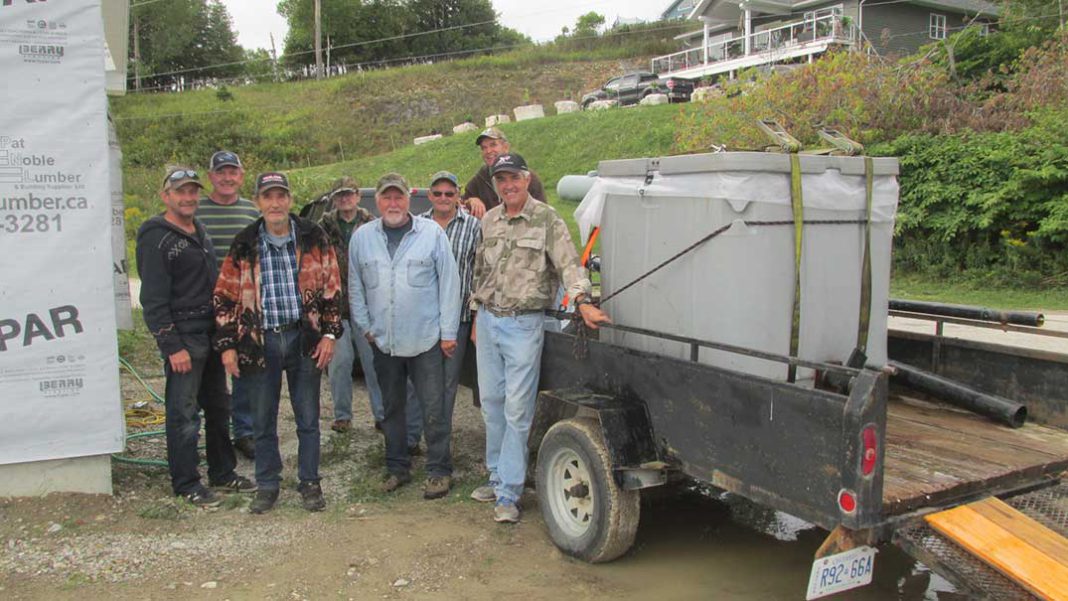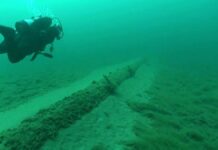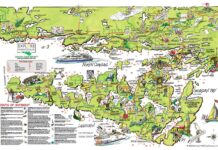GORE BAY—The Gore Bay Fish and Game Club (GBFGC) had tremendous success in its raising of walleye this year and stocked a huge amount of fish in Lake Kagawong last week.
“We started the walleye project on July 4, having received 10,000 walleye at that time with an average weight of .51 grams and stocked the 8,296 fish (on Thursday of last week),” stated Ian Anderson, a member of the GBFGC. “The survival rate of the fish was 83 percent which is a phenomenal success,” he said, noting the fish weighed an average of 6.0 grams.
“The fish look great,” stated Wayne Selinger, Ministry of Natural Resources and Forestry (MNRF) biologist, who was present for the stocking of the fish. “Congratulations and kudos to the club for a job very well done. The fish look good and there was a very good survival rate.”
The GBFGC and its volunteers helpers formed a team that included Chris Robinson, Ches Witty, Murray Orford, Brian Barker, Don Poque, Dennis Benninger, Randy German, Ron Snell, Derek Witty, Jeff Bell, Barry Wall, Ian Anderson, Ron Campbell, Eric Ruediger, Mike Fogal, Peter Witty and Paul Leclair. It should be pointed out that together, these folks contributed 1,500 hours in constructing the new hatchery and GBFGC club room and in raising the fish this summer.
“There are a bunch of reasons all of this happened,” said Mr. Anderson. He said the GBFGC has to acknowledge the Blue Jay Creek Fish Culture Station hatchery and its manager Dale Jordison, and obviously the approval and assistance of Wayne Selinger and the Sudbury district office of the MNRF. “We repeatedly sought the advice, and received it, from Paul Methner, now retired from the MNRF, who provided a great source of answers on the day-to-day questions of raising the fish,” said Mr. Anderson.
The walleye were stocked in Lake Kagawong and will benefit several townships and municipalities including Billings, Campbell South and the municipality of Central Manitoulin, with the benefit of establishing the walleye fishery, he noted. “The MNRF plant a larger number of pond fingerlings each July, our plant is meant to supplement their stocking,” said Mr. Anderson. He explained “by planting advanced fall fingerlings, we hope to overcome some of the predation by smaller fish present like perch or smelt with our larger walleye.”
“With the Manitoulin Island tourist-based economy, establishing a fish stock, or establishing a new fishery benefits all of the Island,” added Mr. Anderson.






